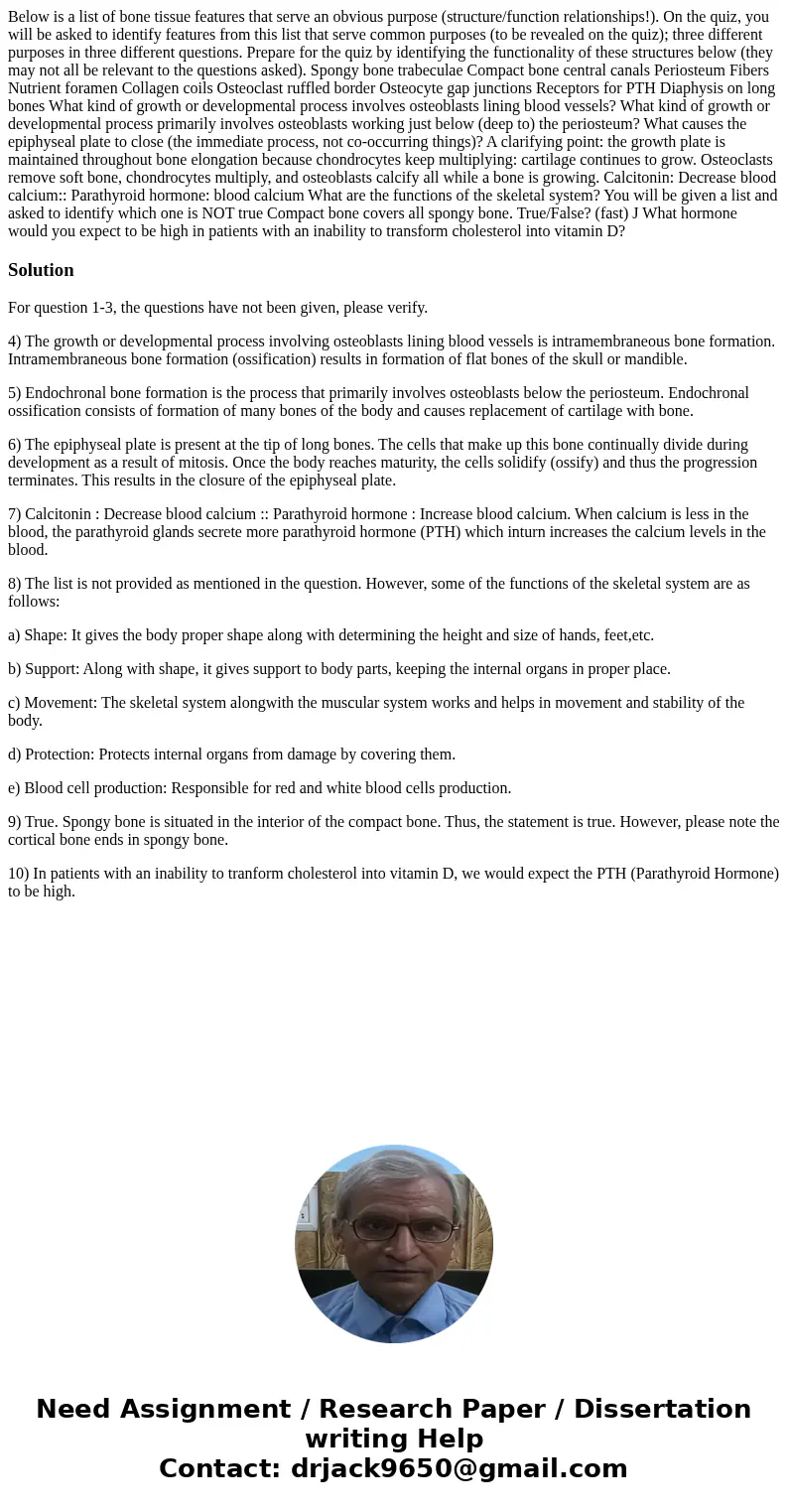Below is a list of bone tissue features that serve an obviou
Solution
For question 1-3, the questions have not been given, please verify.
4) The growth or developmental process involving osteoblasts lining blood vessels is intramembraneous bone formation. Intramembraneous bone formation (ossification) results in formation of flat bones of the skull or mandible.
5) Endochronal bone formation is the process that primarily involves osteoblasts below the periosteum. Endochronal ossification consists of formation of many bones of the body and causes replacement of cartilage with bone.
6) The epiphyseal plate is present at the tip of long bones. The cells that make up this bone continually divide during development as a result of mitosis. Once the body reaches maturity, the cells solidify (ossify) and thus the progression terminates. This results in the closure of the epiphyseal plate.
7) Calcitonin : Decrease blood calcium :: Parathyroid hormone : Increase blood calcium. When calcium is less in the blood, the parathyroid glands secrete more parathyroid hormone (PTH) which inturn increases the calcium levels in the blood.
8) The list is not provided as mentioned in the question. However, some of the functions of the skeletal system are as follows:
a) Shape: It gives the body proper shape along with determining the height and size of hands, feet,etc.
b) Support: Along with shape, it gives support to body parts, keeping the internal organs in proper place.
c) Movement: The skeletal system alongwith the muscular system works and helps in movement and stability of the body.
d) Protection: Protects internal organs from damage by covering them.
e) Blood cell production: Responsible for red and white blood cells production.
9) True. Spongy bone is situated in the interior of the compact bone. Thus, the statement is true. However, please note the cortical bone ends in spongy bone.
10) In patients with an inability to tranform cholesterol into vitamin D, we would expect the PTH (Parathyroid Hormone) to be high.

 Homework Sourse
Homework Sourse